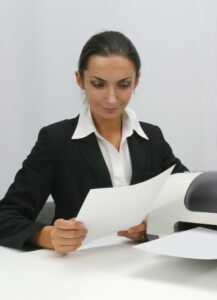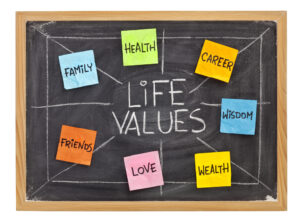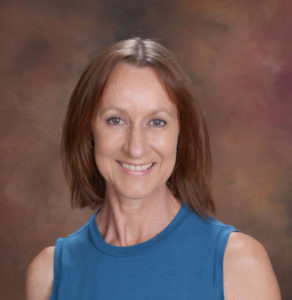 This blog article is an unofficial “part two” to the blog article I wrote called, Jigsaw Piece Listening. If you haven’t read it, please do as it sets the context for this article.
This blog article is an unofficial “part two” to the blog article I wrote called, Jigsaw Piece Listening. If you haven’t read it, please do as it sets the context for this article.
As a mentor coach, my main role is to give specific input to coaches about their coaching skill level, both what they are doing well and to keep doing (Strengths), and what to improve (Upgrade).
As Professionally Trained Coaches, it is our responsibility to “engage in ongoing learning and development” as a coach, which is the ICF Core Competency of “Embodies a Coaching Mindset.”
“The improvement of understanding is for two ends: first, our own increase of knowledge; secondly, to enable us to deliver that knowledge to others.” ~ John Locke
Using an Accurate, Verbatim Transcript to support your learning
One of the most invaluable and useful resources you can use to support your self-learning about your coaching skill level is by using an accurate verbatim transcript, with timestamps, of your coaching session that allows you to read what the client said, and how the coach responded.
Further below I give some resources for Transcription Services. There’s a wide range of free to fee services available. Generally, the lower the cost, the less accurate the transcript, and the more manual corrections you’ll need to make to the transcript. Always get transcript with timestamp, so you can easily see the time client speaks, and the time the coach speaks.
If you have an accurate verbatim transcript service you use, please feel free to add a Comment at the bottom of this article with information about the service name, website address, and price per minute in US dollars.
Recording your coaching sessions
If you are not currently working with a Qualified Mentor Coach, I recommend every coach engage in self-learning. Here’s a process to consider:
Every 6 months, ask one of your favorite clients if you can record three coaching sessions with their permission. If you work for a company that doesn’t allow this to occur, then ask in your networks who might be interested in 3 coaching sessions of 40 – 60 minutes each.
Once you have your first recording, you can then obtain a transcript of the recording, and study what the client said, and each time how the coach responded.
This type of study has the possibility of improving your coaching skills and performance as a coach very quickly, as you will soon be able to identify such things as:
- Patterns of speaking by the client (including specific words, phrases, metaphors, visual words, and emotional content)
- Patterns of speaking by the coach (including matching and mismatching words the coach uses.
- Client learning preferences, such as visual (see), auditory (think) or kinesthetic (feel) language.
- Coach use of filler words and phrases such as Yeah. Hmm-hmm. Right. Okay. Gotcha.
- How much time the client speaks for, and how much time the coach speaks for in response (client time of speaking is generally much more than the coach time of speaking).
- How much space the coach leaves before beginning to speak. Or how many times the coach interrupts the client before they are finished speaking.
- What the client reveals about themselves including their values, strengths, perceived weaknesses, their emotions.
What you cannot observe from a transcript is somatic information, meaning changes in client facial expressions, use of hand or arm movements, or other somatic / body language.
Studying your coaching transcript
 The first 5 – 15 minutes is most often where the client shares a lot about themselves, this is very normal. It’s also where most coaches have the opportunity to improve their listening skills.
The first 5 – 15 minutes is most often where the client shares a lot about themselves, this is very normal. It’s also where most coaches have the opportunity to improve their listening skills.
Some coaches interrupt if they deem the client is speaking for “too long” which means the coach is judging what too long is, and it’s the coach who is feeling uncomfortable with the amount of time the client is speaking.
Rather than “tune out” as the client is speaking, or automatically apply a technique to gain some control (e.g. interrupting the client). The opportunity for the coach is to “lean in.” Become even more curious and attentive to the client use of words, their learning style, their energy, and the content of their stories. As well as any emotional content the client is using to express themself.
Below are some excerpts from a transcript and a process of how to engage with a transcript to improve your coaching performance. I’ve highlighted specific words, phrases and sentences that stood out to me as I read the transcript.
Transcript Example – Part One
This client spoke for 1 minute 51 seconds before the client paused, and the coach responded:
Coach: 00:00 What would you like coaching on today that would be valuable to you?
Client: 00:09 “Well, I thought maybe a good place to start would be just to pick up where we left off. Which from my notes, we were talking about my definition of future success. Through some conversation there were a couple of themes that we had discussed. One was this concept of a legacy, which sort of led into life purpose. And we had talked about, “What is my life purpose?” I’d responded that it wasn’t so clean cut to me. It’s something that I thought I had an opportunity to think over. Which I did.”
Carly debrief of the above paragraph
The theme of this first part of client speaking is client recounting their process of engaging with actions the client decided on from last coaching session.
There are also specific words that are used such as legacy and life purpose. Client uses visual language of “wasn’t so clean cut to me” which might be a shaving metaphor, as this is a male client.
Nothing was said by the coach at this stage.
Transcript Example – Part Two
 Client: 00:59 “And the way I sort of frame this up for myself is, picture sort of three tiers, or maybe a pyramid that’s broken into three layers. The top layer of that pyramid is what I’m labeling as, “Life Purpose.” And then the middle layer is what I’m labeling as, “Values.” Which should inform the life purpose obviously. Then the bottom layer is what I labeled either, “Life pursuits,” or I brought back this phrase, “Positive Disruption,” which came out of our discussion last time.”
Client: 00:59 “And the way I sort of frame this up for myself is, picture sort of three tiers, or maybe a pyramid that’s broken into three layers. The top layer of that pyramid is what I’m labeling as, “Life Purpose.” And then the middle layer is what I’m labeling as, “Values.” Which should inform the life purpose obviously. Then the bottom layer is what I labeled either, “Life pursuits,” or I brought back this phrase, “Positive Disruption,” which came out of our discussion last time.”
Client: 01:51 “So I filled out that pyramid, each of those three layers with a running start at what I thought might be the right answer. Uhm as I stand here, sitting here today. All of this I suppose is subject to change and evolution. But just snapshot in time, where I sit right now in my life with what I think is my best shot at filling this out. So I don’t know if that’s something you’d like to walk through. I’m certainly willing to share that.”
Carly debrief of the above paragraph
These two paragraphs explain more deeply the first paragraph. The client uses a visual approach and described his three layers in his pyramid.
Unique phrases the client used include: Positive Disruption, Subject to Change and Evolution.
Other visual / metaphorical words include: Frame, My Best Shot.
This client used phrases that had body posture or physical movement such as Running Start, Where I Sit Right Now, Walk Through.
How the Coach Responded
There are so many choices about how the coach could have responded; here is what the coach actually said:
Coach: 02:30 “I’ve drawn the pyramid as you have described it. Would you like to dive deeper into this? Or is this just something you want to share about what you’ve done?”
This response was customized and demonstrated coach was present and listening. Yet there were so many more responses the coach could have had.
The more the coach uses specific words and phrases the client uses, the more the client knows the coach is listening to them.
Other choices the coach could have made:
This is where you can have some fun and play with what you (the coach) could have also responded with.
Here are a few alternatives to get you started, perhaps you can come up with more (and please feel free to share in the Comments at bottom of this article).
- (Acknowledgement) That’s some great initial exploration of how you perceive your Life Purpose, Values and Life Pursuits sitting together in your Pyramid.
- (Acknowledgement) That’s a clear snapshot you’ve created of where you are now with your exploration of Life Purpose, Values and Life Pursuits.
- (Curiosity) When you said you brought back the phrase Positive Disruption and it’s associated with Life Pursuits. How do they sit together for you?
- (Partnering on where to explore now) Now that you have a snapshot of your Pyramid, what would support you to continue exploring?
- (Partnering on where to explore now) What’s important for you to walk through now?
Transcription Services
Here are examples of two transcription services yet there are many more if you search the web. These services include timestamps.
Based on a 40 minute coaching recording, their level of accuracy and their prices per minute and for 40 minutes total time. The voice recognition transcripts require your manual correction to bring to 99% accuracy.
Rev.com – voice recognition 80% accuracy – 0.25c USD per minute ($10 USD)
Rev.com – 99% accuracy with a human reviewing – $1.25 USD per minute ($50)
Scribie.com – voice recognition 80% accuracy – 0.10c USD per minute ($4)
Scribie.com – 99% accuracy with human reviewing – 0.80c USD per minute ($32 USD)
In Closing…
I now require all of my mentoring clients to provide an accurate verbatim transcript with timestamps when they send me their coaching recording to review together so we are working from the same transcript. I ask them to study the first 10 minutes in particular for what the client said, and how they responded. This type of self-study supports my mentoring clients be able to engage more deeply in their learning process, and to improve their coaching skills more quickly.
I wish you fun and great learning reviewing your coaching recording with a transcript, in service of improving your coaching performance for your clients to benefit from.
Written by Carly Anderson, MCC
Are you ready to upgrade your coaching skills, prepare for your next ICF credential, or renew your credential?
The Mentor Coaching Group Program is an ICF approved individual / group mentor coaching program. Approved for 30 of ICF Core Competency CCEs, including 10 hours of mentor coaching. For comparison between my MCC program, and Level 3, go to Q6 on FAQs page
Mentor Coaching Programs Now Open!
visit this page for more information
 I offer a rich, experiential mentor coaching group and individual program that has many exclusive offerings for participants. You can read some testimonials from real people,FAQs, or find out more about The Mentor Coaching Program here
I offer a rich, experiential mentor coaching group and individual program that has many exclusive offerings for participants. You can read some testimonials from real people,FAQs, or find out more about The Mentor Coaching Program here
I offer other products including The Upgraded Target Approach: Clarifying the ICF Core Competency Model, as well as Ten Characteristics of MCC Skill Level. And a very unique opportunity to hear 15 consecutive coaching sessions with one of my clients in the Butterfly on the Wall Coaching Series.
A long term experienced and continuously active MCC Assessor since 2005, assessing and mentoring for all 3 credential levels. Including being trained to assess using ICF ACC Behaviors, PCC Markers, and MCC Behaviors. As at January 20, 2025, 210 of the coaches I’ve mentored for their MCC preparation have passed ICF MCC exam process, as well as hundreds of coaches passed their ACC and PCC exam process. I do my best to communicate ICF publicly available credential information in a simple manner. Mentoring Supervision clients have access to an incredible and exclusive member-only library that includes 40+ coaching recordings that have actually passed ICF MCC, PCC and ACC credential process.
I’m passionate about supporting the professionalism of coaching, which includes often engaging in ICF projects as a volunteer to continue to develop and evolve our profession.
